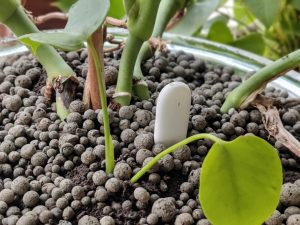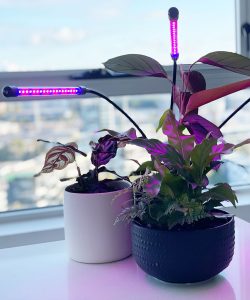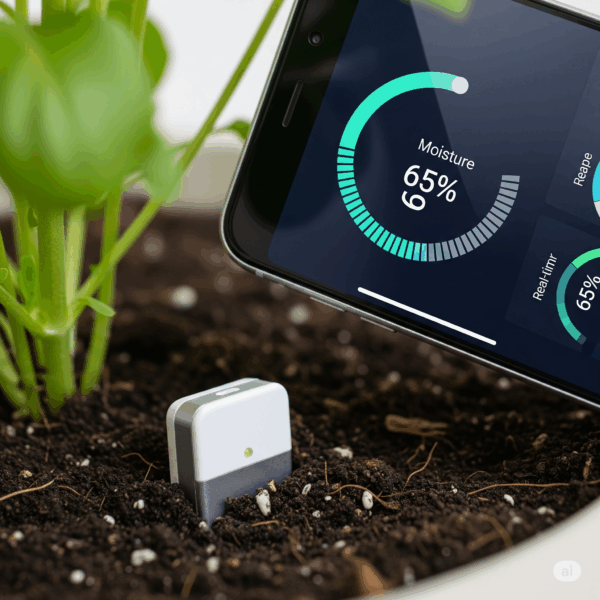Contents
- 1 How Smart Sensors Can Save Your Houseplants (Modern Gardening Tech)
- 1.1 What Are Smart Plant Sensors?
- 1.2 Why Smart Sensors Are a Game-Changer
- 1.3 How Smart Sensors Actually Work
- 1.4 Our Favorite Smart Gardening Essentials
- 1.5 How to Set Up and Use Smart Sensors
- 1.6 Do Smart Sensors Really Work?
- 1.7 Smart Sensor Tips for Best Results
- 1.8 When to Invest in Smart Sensors
- 1.9 Related Articles
- 1.10 Final Thoughts on Smart Sensors for Houseplants
How Smart Sensors Can Save Your Houseplants (Modern Gardening Tech)
Ever wondered why your plants struggle even when you’re watering regularly and giving them “enough light”?
The truth is, most houseplant problems are caused by invisible factors — dry air, low light, or soggy soil.
That’s where smart gardening sensors come in. These clever devices take the guesswork out of plant care by giving you accurate, real-time data. Whether you’re a total beginner or a proud plant collector, smart sensors can literally save your houseplants from dying — and make you look like a pro gardener.
What Are Smart Plant Sensors?
Smart plant sensors are small, tech-powered devices that measure key growing conditions. Think of them as a “Fitbit” for your plants.
They track:
Soil moisture: tells you when to water
Light intensity: checks if your plant is getting enough sunlight
Humidity levels: vital for tropical species
Temperature: ensures your plant isn’t too cold or hot
Nutrient (EC) readings: advanced models show when your plant needs fertilizer
Most sensors sync with a mobile app, so you can monitor multiple plants from your phone. Some even create custom care plans for different plant species, adjusting alerts automatically.
Why Smart Sensors Are a Game-Changer
Every indoor gardener struggles with balance — watering too much, not enough light, or air that’s too dry. Smart sensors fix all that by tracking what’s actually happening in your soil and air.
Key benefits include:
Prevent root rot by avoiding overwatering
Detect light deficiencies before leaves fade
Maintain stable humidity for tropical plants
Receive instant alerts when conditions drop outside ideal ranges
Keep a consistent growth environment all year round
With this data, you can finally understand why your plant isn’t thriving — and fix it before it’s too late.
How Smart Sensors Actually Work
Smart sensors use tiny probes and light detectors to measure environmental factors. The information is sent to your smartphone via Bluetooth or Wi-Fi and displayed in easy-to-read charts.
Most devices include:
A metal probe that detects soil moisture and nutrients
A light sensor to measure brightness
A temperature and humidity monitor for air quality
Once connected to your app, you can name your plants, set watering reminders, and even compare their progress over time.
Example: The Xiaomi Mi Flora Monitor provides real-time data for moisture, light, temperature, and nutrients — and syncs to your phone with instant alerts when your plant needs attention.

Our Favorite Smart Gardening Essentials
Want to make indoor plant care easier? Start with these compact, beginner-friendly tools that complement any smart sensor setup:
Smart Soil Moisture Meter: Measures soil dryness and prevents overwatering.
Bluetooth Hygrometer: Tracks air temperature and humidity for tropical plants.
Smart Grow Light: Adjusts automatically based on time and brightness.
✅ Helpful pick: The ThermoPro Smart Hygrometer on Amazon connects to your phone and shows live humidity data — ideal for Calatheas, Monsteras, and ferns that crave moist air.

How to Set Up and Use Smart Sensors
Setting up smart sensors is simple — and takes less than five minutes.
Step-by-step guide:
- Insert the sensor into your plant’s pot near the root zone.
- Download the app (usually from the manufacturer’s website or app store).
- Pair the device with your phone via Bluetooth or Wi-Fi.
- Add your plant to the app by name (many apps recognize common species).
- Monitor and adjust based on real-time readings — water, move, or mist as needed.
Once set up, your plants will “talk” to you digitally — letting you know exactly when they need water or more sunlight.
💡 Pro tip: For large collections, label your sensors or use a rotation system to check multiple plants weekly.
Do Smart Sensors Really Work?
Absolutely — especially for new plant parents or anyone managing more than a few plants.
A 2024 gardening survey found that users of smart sensors saw plant survival rates improve by up to 40%. The main reason? Consistent care. Sensors eliminate guessing and ensure your watering and lighting routines actually match your plant’s needs.
If you travel or have a busy schedule, sensors can alert you remotely — meaning no more surprises when you come home to wilted leaves.
Smart Sensor Tips for Best Results
Even the best tech needs a little technique. Follow these tips for more reliable readings:
Place sensors close to the roots, not the edge of the pot.
Calibrate once per plant type if your sensor supports it.
Avoid using one sensor for too many pots — rotate weekly for accuracy.
Keep batteries charged or use models with USB recharging to prevent data gaps.
Pairing a smart sensor with a self-watering pot or automatic drip kit can create a near hands-free setup — perfect for anyone who tends to forget watering days.
When to Invest in Smart Sensors
If you’re serious about growing healthy plants long-term, sensors are worth it. You’ll especially benefit if you:
Care for more than five plants with varying needs
Grow tropical or sensitive species indoors
Travel often or forget watering days
Want to understand why a certain plant keeps dying
Think of them as the missing piece in your gardening routine — small investment, big payoff.

Related Articles
- How to Create the Perfect Watering Schedule for Indoor Plants
- Effortless Indoor Gardening with Smart Automation Tools
- How to Prevent and Treat Root Rot in Houseplants
Final Thoughts on Smart Sensors for Houseplants
Smart sensors are the future of indoor gardening — giving you instant insights into your plant’s health and helping you make the right decisions before problems start.
If you’ve ever lost a plant and didn’t know why, this technology will finally give you the answers. Combine one with proper watering habits and good lighting, and you’ll never struggle with houseplant care again.
Your plants don’t need luck — they need data.
For more details on choosing the right smart gardening devices, check out The Spruce’s guide to smart gardening tools.

